-

- Sopto Home
-

- Special Topic
-

- Module Knowledge
-

- How to Install 40G QSFP+ Transceiver Modules?
Module Knowledge
- Tips for Buying 10G XFP Transceivers
- XFP Transceivers for Telecommunications
- Three Types of Ethernet SFP Transceiver Modules Introduction
- Info about High Density CXP Optical Module
- Multipurpose CFP Optical Modules
- Info about CFP Management Interface
- SFP+ Transceivers Short Range Module Overview
- 3 Reasons Every Network Needs GLC-LH-SM Transceiver
- Is the GLC-SX-MM Transceiver Right for Your Switch?
SOPTO Special Topic
Certificate



Guarantee
Except products belongs to Bargain Shop section, all products are warranted by SOPTO only to purchasers for resale or for use in business or original equipment manufacturer, against defects in workmanship or materials under normal use (consumables, normal tear and wear excluded) for one year after date of purchase from SOPTO, unless otherwise stated...
Return Policies
Defective products will be accepted for exchange, at our discretion, within 14 days from receipt. Buyer might be requested to return the defective products to SOPTO for verification or authorized service location, as SOPTO designated, shipping costs prepaid. .....
Applications
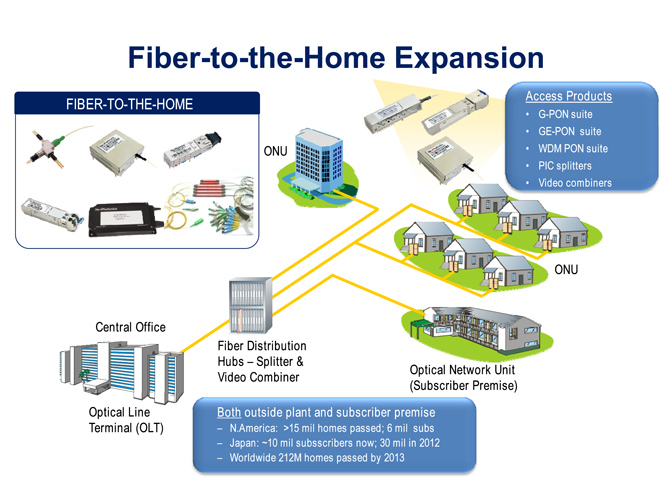 Fiber Optic Transceiver Modules can be applied to these occasions or fields.
Fiber Optic Transceiver Modules can be applied to these occasions or fields.
Ethernet
IPTV
FTTX
Security
Video Monitor
SDH/SONET
Data Communication
Storage Area Networks
SOPTO Products
- Fiber Optic Transceiver Module
- High Speed Cable
- Fiber Optical Cable
- Fiber Optical Patch Cords
- Splitter CWDM DWDM
- PON Solution
- FTTH Box ODF Closure
- PCI-E Network Card
- Network Cables
- Fiber Optical Adapter
- Fiber Optical Attenuator
- Fiber Media Converter
- PDH Multiplexers
- Protocol Converter
- Digital Video Multiplexer
- Fiber Optical Tools
- Compatible
Performance Feature
Stable
Low cost
Small size
Economic
Dust-proof
High speed
Hot-pluggable
Good EMI, EMC
Wide appliaction field
DDM function available
Long transmission distance
Good Anti-static performance
Module Knowledge
Recommended
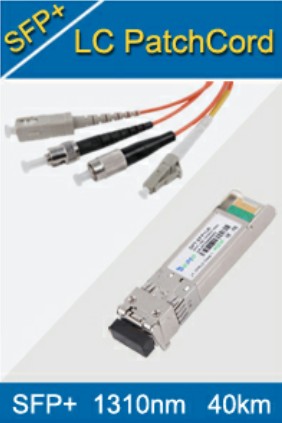
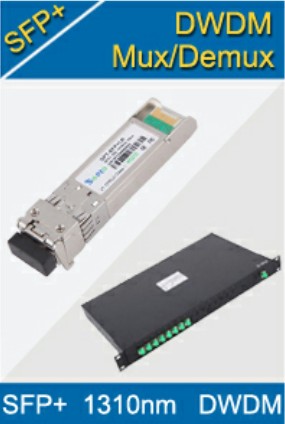
How to Install 40G QSFP+ Transceiver Modules?
This installation note provides the installation instructions for the 40-Gigabit Quad Small Form-Factor Pluggable Plus (QSFP+) transceiver modules. The modules are hot-swappable input/output (I/O) devices that connect the system's module port electrical circuitry with either a copper or a fiber-optic network.
The 40-Gigabit QSFP+ transceiver module is a hot-swappable, parallel fiber-optical module with four independent optical transmit and receive channels. These channels can terminate in another 40-Gigabit QSFP+ transceiver, or the channels can be broken out to four separate 10-Gigabit SFP+ transceivers. (See Figure1)
The QSFP+ transceiver module connects the electrical circuitry of the system with either a copper or an optical external network. (See Figure 2 for a view of the optical QSFP+ transceiver.) The transceiver is used primarily in short reach applications in switches, routers, and data center equipment where it provides higher density than SFP+ modules.
Figure 1 40-Gigabit QSFP+ Transceiver Module (Copper)
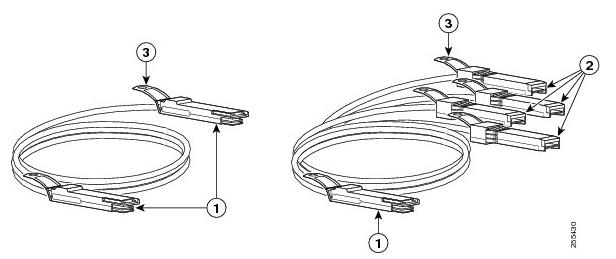
- QSFP+ transceiver body
- 10GBASE SFP+ transceivers
- Pull tab
Figure2 40-Gigabit QSFP+ Transceiver Module (Optical)
.jpg)
- 40GBASE QSFP+ transceiver body
- Bail-clasp latch
- Electrical connection to the module circuitry
Note: The multiple-fiber push-on (MPO) connectors and the duplex LC connectors on the optical QSFP+ transceivers support network interface cables with either Physical contact (PC) or Ultra-Physical Contact (UPC) flat-polished face types. The MPO connectors and the duplex LC connectors on the optical QSFP+ transceivers do not support network interface cables with an angle-polished contact (APC) face type.
The QSFP+ transceiver module can have either a bail-clasp latch or a pull-tab latch. Installation procedures for both types of latches are provided.
The QSFP+ transceiver module is a static-sensitive device. Always use an ESD wrist strap or similar individual grounding device when handling QSFP+ transceiver modules or coming into contact with system modules.
Before install the 40G QSFP+ transceiver module, you need these tools:
- Wrist strap or other personal grounding device to prevent ESD occurrences.
- Antistatic mat or antistatic foam to set the transceiver on.
- Fiber-optic end-face cleaning tools and inspection equipment
To install an QSFP+ transceiver module, follow these steps:
Step 1 Attach an ESD wrist strap to yourself and a properly grounded point on the chassis or the rack.
Step 2 Remove the QSFP+ transceiver module from its protective packaging.
Step 3 Check the label on the QSFP+ transceiver module body to verify that you have the correct model for your network.
Step 4 For optical QSFP+ transceivers, remove the optical bore dust plug and set it aside.
Step 5 For transceivers equipped with a bail-clasp latch:
a. Keep the bail-clasp aligned in a vertical position.
b. Align the QSFP+ transceiver in front of the module's transceiver socket opening and carefully slide the QSFP+ transceiver into the socket until the transceiver makes contact with the socket electrical connector. (See Figure3.)
Step 6 For QSFP+ transceivers equipped with a pull-tab:
a. Hold the transceiver so that the identifier label is on the top.
b. Align the QSFP+ transceiver in front of the module's transceiver socket opening and carefully slide the QSFP+ transceiver into the socket until the transceiver makes contact with the socket electrical connector.
Figure 3 Installing the 40-Gigabit QSFP+ Transceiver Module (Optical Transceiver Equipped with a Bail-Clasp Latch Shown)
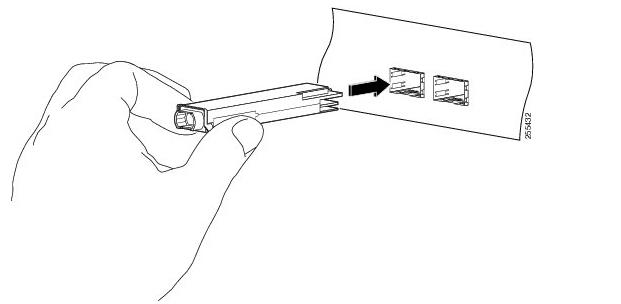
Step 7 Press firmly on the front of the QSFP+ transceiver with your thumb to fully seat the transceiver in the module's transceiver socket. (See Figure 4.) If the latch is not fully engaged, you might accidently disconnect the QSFP+ transceiver module.
Figure 4 Seating the 40-Gigabit QSFP+ Transceiver Module (Optical Transceiver Equipped with a Bail-Clasp Latch Shown)

Step 8 For optical QSFP+ modules, reinstall the dust plug into the QSFP+ transceivers optical bore until you are ready to attach the network interface cable. Do not remove the dust plug until you are ready to attach the network interface cable.
For more high quality fiber optical module, please contact SOPTO.





-180x180.JPG)
